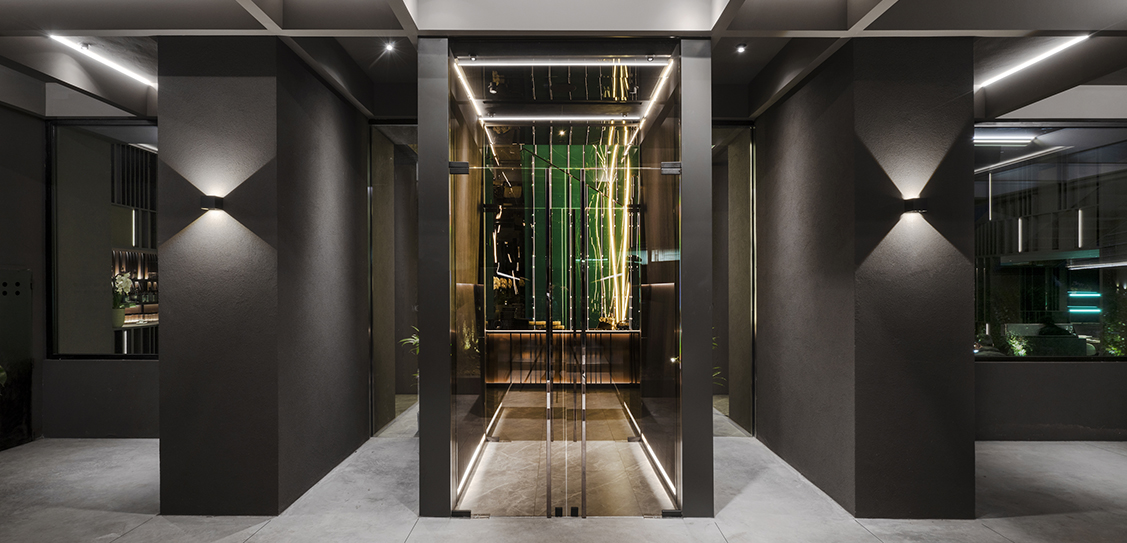The Italian architect, scenographer and designer, Maurizio Lai designed Moya as a place where lights, colours and abstract geometries express an intensely creative compositional language far from a standardized Asian eatery.
Lai has devised the character and functions of over 1000 sq m, to provide an opportunity to surprise and reassure the guest. The use of light, evidently artistic signs and scenic effects describe a plausible and welcoming idea of the future.
The interior design is developed in a material, sensorial and chromatic narrative, divided into diverse environments to involve and amplify perception.
The architectural reconfiguration of the former building is highlighted by the facade design. A process of underlining and accents carries out linear luminous elements, while oversized windows make the interior space permeable.
The synergy between architecture, design and the artistic gesture, which characterizes Maurizio Lai's work, expresses itself in a joyful light installation. A fluid and climbing light string that connects the space, a three-dimensional signature, introduces a theme of dynamism and verticality and dominates the hall, developing in height up to the second floor.
The backdrop is an emerald green glass wall with a vertical scan of vivid spots. Deep surfaces in bronzed mirrors plaster the walls of the stairwell reflecting the installation indefinitely, expanding the space and its vision.
The spacious principal dining room is embellished with a second installation. An orderly scan of digital prints on backlit polycarbonate plates paints an essentially aquatic landscape, with shades adjacent to the colour modulations on the walls, but in contrast with the warmth of the wooden paneling of the room.
The horizontal sculpture interestingly communicates with the design project along the sidewalls, where a series of custom created lamps draw on polychrome glass the sense of perpetual northern lights.
The elegant dining rooms, developed on two floors, are carefully distinguished by a chromatic tale, that contrasts the deep tones of the coverings with crystal elements and luminous features.
Softly diffused light emerges as a distinctive sign, shining through several custom made fittings, to amplify the visual experience. Backlit surfaces, diffused projection and recessed lighting mix with the wooden and velvety coatings, as well as with the ceramic and glass coverings, for a fluid sensation.
The front desk, in coupled orange backlit glass, interspersed with Alpi veneer wood strips, visually anticipates a metric and detailed scan that recurs in the wall claddings, the dividers, the bar and the sushi counters.
The decorated ceilings propose the familiar motif of the geometric scanning, with a parametric flair, declined in the diverse environments with varied materials, punctuated by soft lighting effects.
The floors are ceramic, with a stoneware effect, by Florim, benches and seats have a powder-coated iron structure, with Elitìs fabric coverings.
In the secondary dining room on the ground floor, which overlooks the private garden through a generous window, the natural suggestions are amplified by the effective use of floating glass, which Lai chooses to generate a precise sequence of vertical dividers, illuminated on the coast.
Thin vertical glass strips are conveniently used to divide the ample space with a diffuse perspective effect, voluntarily recalling the aqueous tones of the luminous installations on the side walls.



